Paper 1 Quiz Kinematics
1/17
Earn XP
Description and Tags
Data Booklet & calculator is allowed. Time how long you take to complete the quiz. 50% is a good start.
Name | Mastery | Learn | Test | Matching | Spaced |
|---|
No study sessions yet.
18 Terms
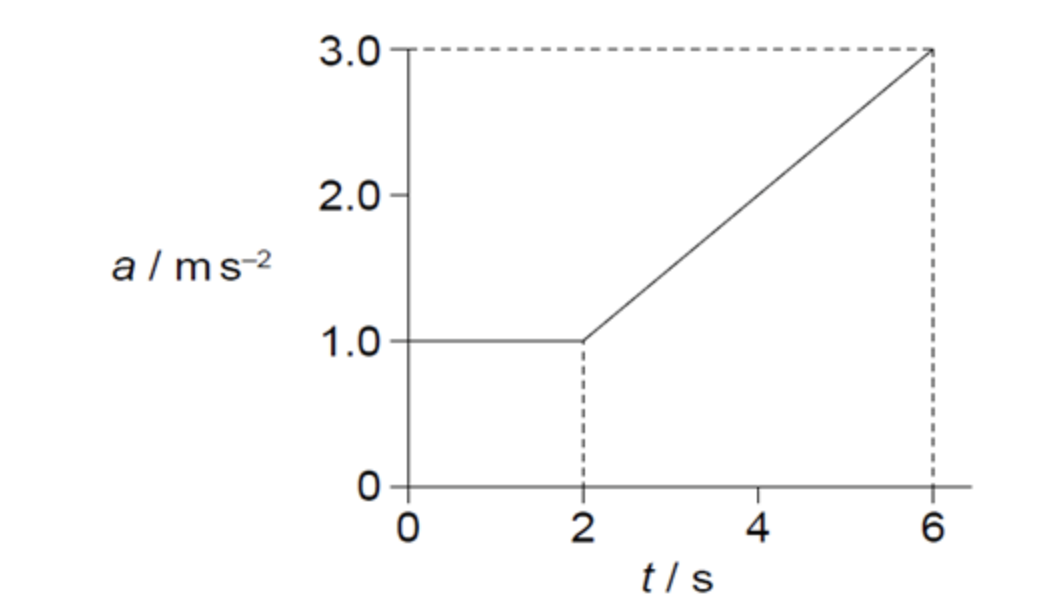
The variation with time t of the acceleration a of an object is shown. What is the change in velocity of the object from t = 0 to t = 6 s?
To find the change in velocity, calculate the area under the acceleration vs. time graph from t = 0 to t = 6 s. This area represents the total change in velocity during that time interval. ANSWER: 10 m s^-1
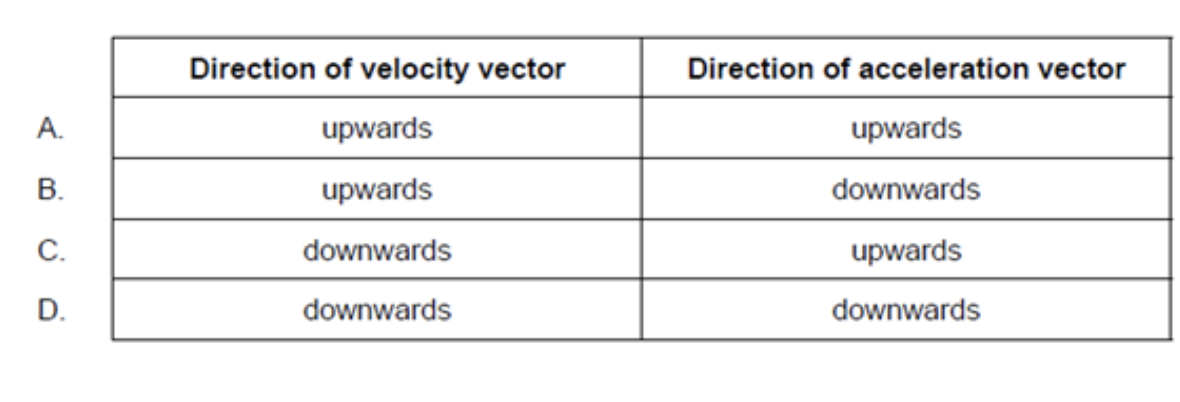
A sky diver is falling at terminal speed when she opens her parachute. What are the direction of her velocity vector and the direction of her acceleration vector before she reaches the new terminal speed?
Before reaching the new terminal speed, the velocity vector is downward while the acceleration vector is upward due to air resistance acting against gravity. ANSWER: C
A stone is thrown downwards from the edge of a cliff with a speed of 5.0 m s^–1. It hits the ground 2.0 s later. What is the height of the cliff?
Using the equation s = ut + (1/2)at², where s is the distance (height), u is the initial velocity (5.0 m/s), a is the acceleration due to gravity (9.81 m/s²), and t is the time (2.0 s), we can calculate the height: s = 5.0 m/s 2.0 s + (1/2) 9.81 m/s² * (2.0 s)². This results in s = 10 m + 19.62 m = 29.62 m, which rounds to approximately 30 m.
A ball is thrown upwards at an angle to the horizontal. Air resistance is negligible. Which statement about the motion of the ball is correct?
A. The acceleration of the ball changes during its flight.
B. The velocity of the ball changes during its flight.
C. The acceleration of the ball is zero at the highest point.
D. The velocity of the ball is zero at the highest point.
The correct statement is B. The velocity of the ball changes during its flight due to the effects of gravity.
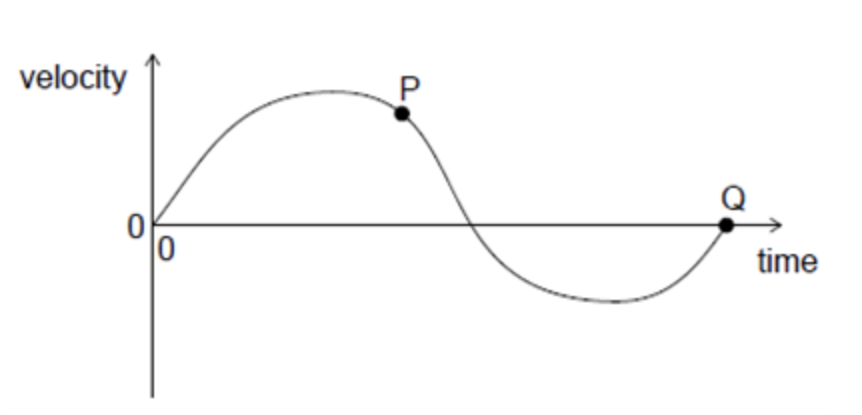
The graph shows the variation of velocity of a body with time along a straight line. What is correct for this graph?
A. The maximum acceleration is at P.
B. The average acceleration of the body is given by the area enclosed by the graph and time axis.
C. The maximum displacement is at Q.
D. The total displacement of the body is given by the area enclosed by the graph and time axis.
The correct statement is D. The total displacement of the body is given by the area enclosed by the graph and the time axis.
A truck has an initial speed of 20 m s^–1. It decelerates at 4.0 m s^–2. What is the distance taken by the truck to stop?
Using the equation v² = u² + 2as, where v is the final velocity (0 m/s), u is the initial velocity (20 m/s), a is the acceleration (-4.0 m/s²), we can solve for s: 0 = (20 m/s)² + 2 * (-4.0 m/s²) * s. This results in s = 50 m.
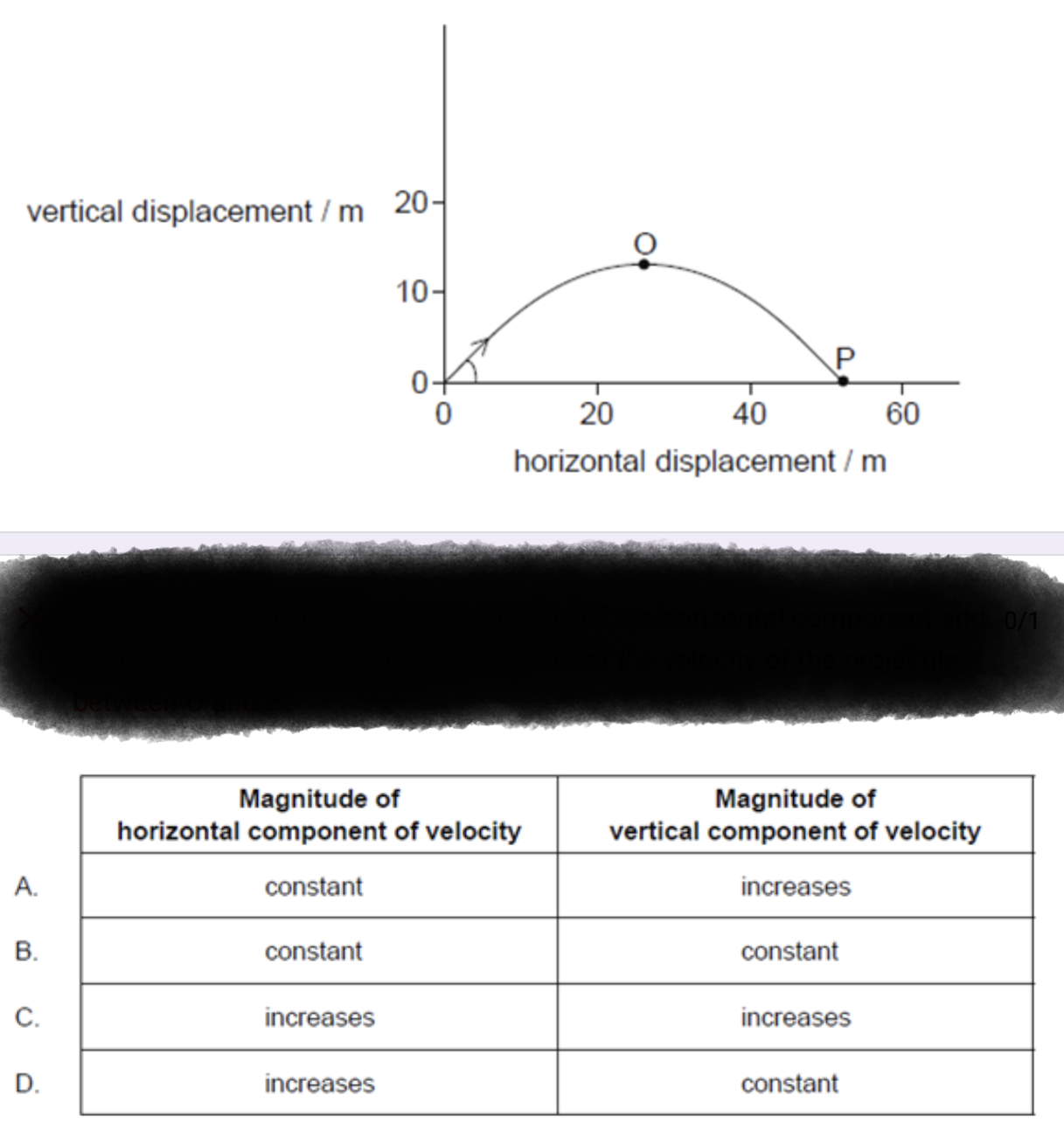
A projectile is fired at an angle to the horizontal. Air resistance is negligible. The path of the projectile is shown. Which gives the magnitude of the horizontal component and the magnitude of the vertical component of the velocity of the projectile between O and P?
The horizontal component remains constant, while the vertical component changes due to the acceleration of gravity. The horizontal component can be calculated using the initial speed and the angle, and the vertical component can be determined by the effects of gravity on the projectile's motion. ANSWER: A
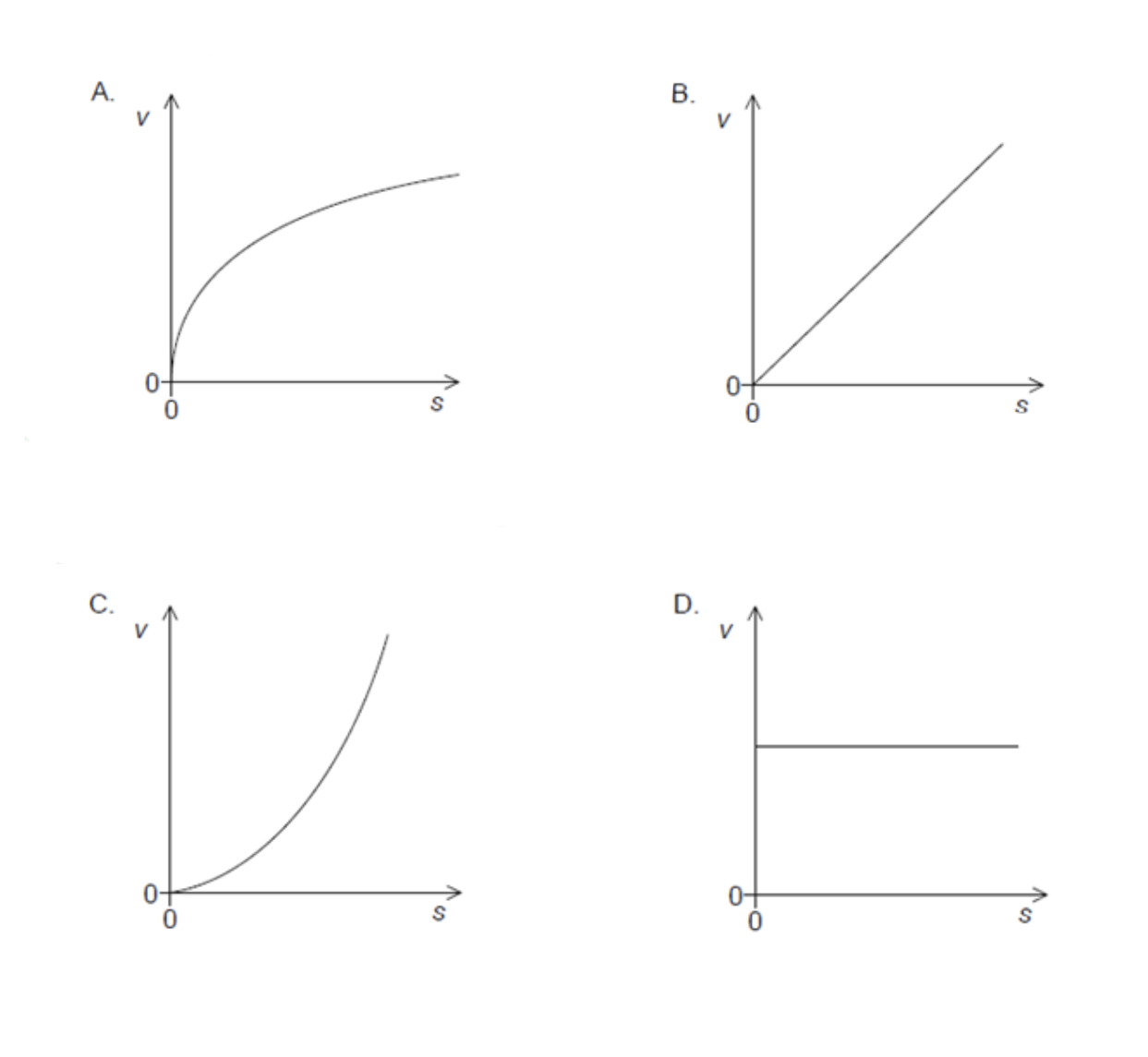
A runner starts from rest and accelerates at a constant rate throughout a race. Which graph shows the variation of speed v of the runner with distance travelled s?
The graph is a parabola opening upwards, indicating that the speed increases quadratically with distance as the runner accelerates from rest. ANSWER: A
An object is projected vertically upwards at time t = 0. Air resistance is negligible. The object passes the same point above its starting position at times 2 s and 8 s. If g = 10 m s^–2, what is the initial speed of the object?
Let the height reached by the object at time t = 2 s be h. Using the equation s = ut + (1/2)at², where u is the initial speed, a = -g = -10 m/s² (acceleration due to gravity), and we use the same equation for both cases. The height at 2 s is: h = u(2) + (1/2)(-10)(2)² = 2u - 20. The height at 8 s is: h = u(8) + (1/2)(-10)(8)² = 8u - 320. 0 = 8u -320. 320 = 8u. 320/8 = u 50 = u

The distances between successive positions of a moving car, measured at equal time intervals, are shown. The car moves with
A. acceleration that increases linearly with time.
B. acceleration that increases non-linearly with time.
C. constant speed.
D. constant acceleration.
ANSWER: B
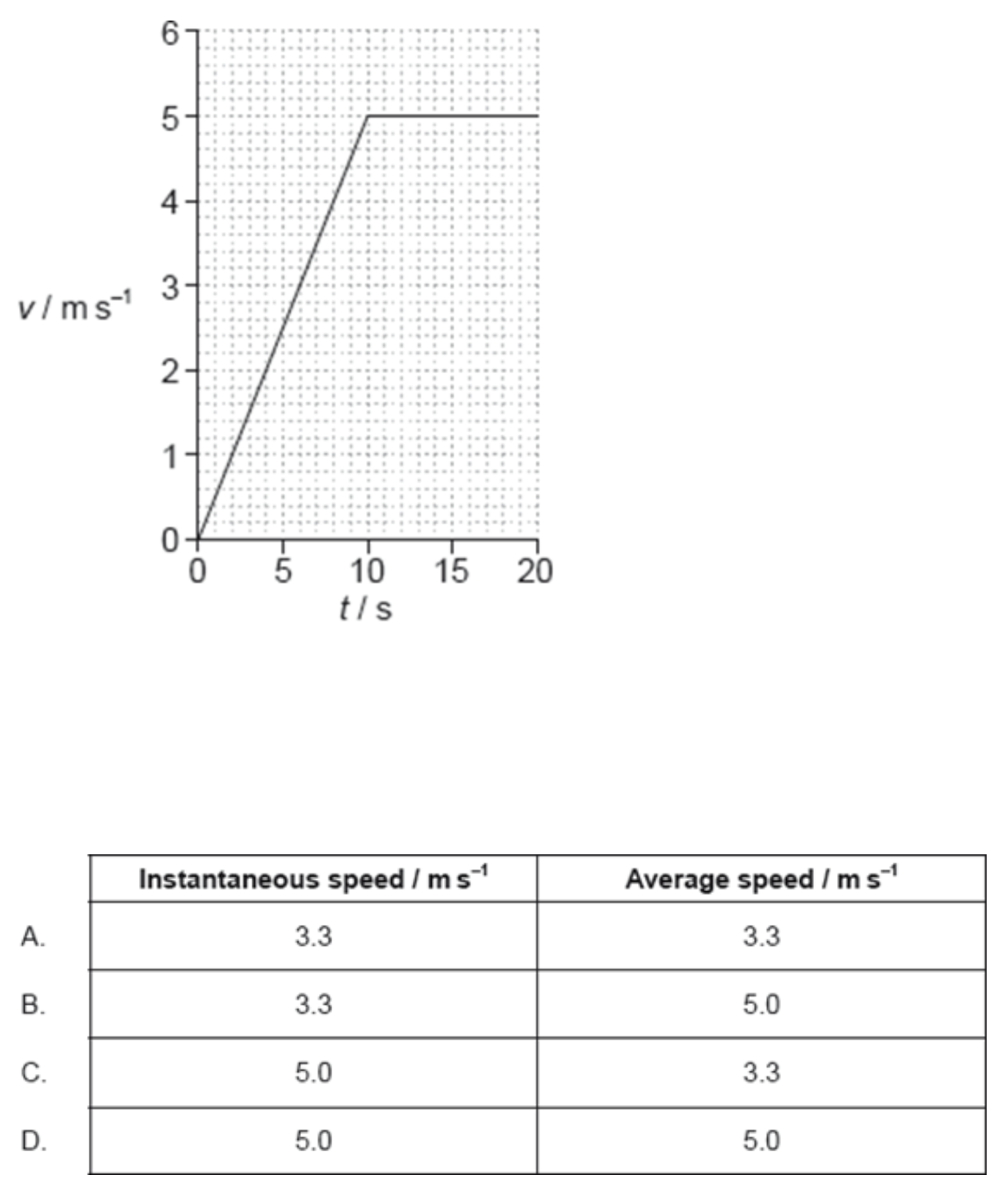
A boy runs along a straight horizontal track. The graph shows how his speed v varies with time t. After 15 s the boy has run 50 m. What is his instantaneous speed and his average speed when t = 15 s?
ANSWER: A
The variation of the displacement of an object with time is shown on a graph. What does the area under the graph represent?
A. No physical quantity
B. Velocity
C. Acceleration
D. Impulse
ANSWR: A

An object is thrown upwards. The graph shows the variation with time t of the velocity v of the object. What is the total distance at a time of 1.5 s, measured from the point of release?
ANSWER: 1.25 m
An object is released from a stationary hot air balloon at height, h, above the ground. An identical object is released at height, h, above the ground from another balloon that is rising at constant speed. Air resistance is negligible. What does not increase for the object released from the rising balloon?
A. The distance through which it falls
B. The time taken for it to reach the ground
C. The speed with which it reaches the ground
D. Its acceleration
ANSWER: D
An object is released from rest in the gravitational field of the Earth. Air resistance is negligible. How far does the object move during the fourth second of its motion?
A. 15 m
B. 25 m
C. 35 m
D. 45 m
ANSWER: C
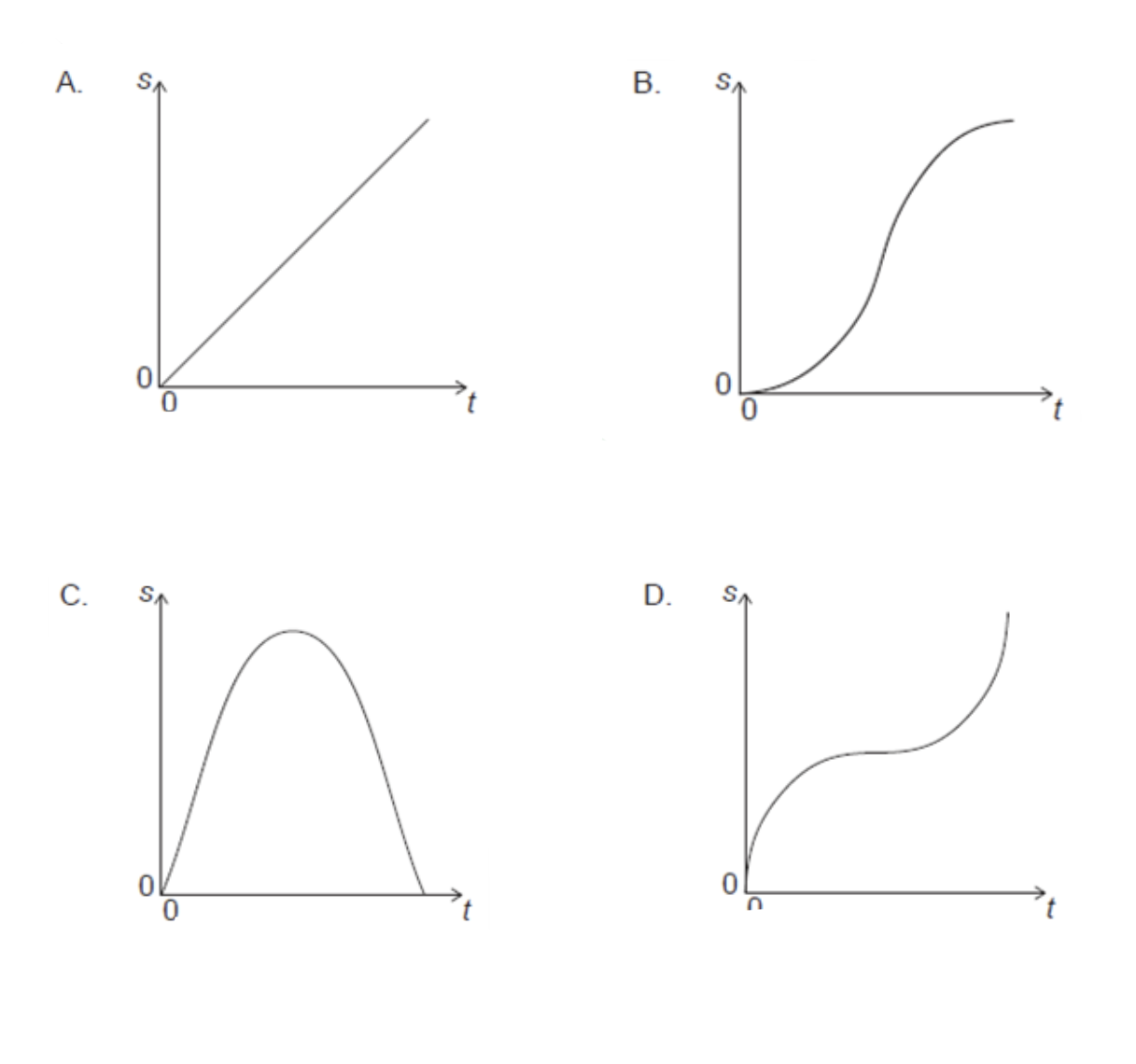
The graph shows the variation of speed v of an object with time t. Which graph shows how the distance s travelled by the object varies with t?
ANSWER: B
A ball is tossed vertically upwards with a speed of 5.0 m s^–1. After how many seconds will the ball return to its initial position?
1.0 s
A projectile is fired horizontally from the top of a cliff. The projectile hits the ground 4 s later at a distance of 2 km from the base of the cliff. What is the height of the cliff?
80 m